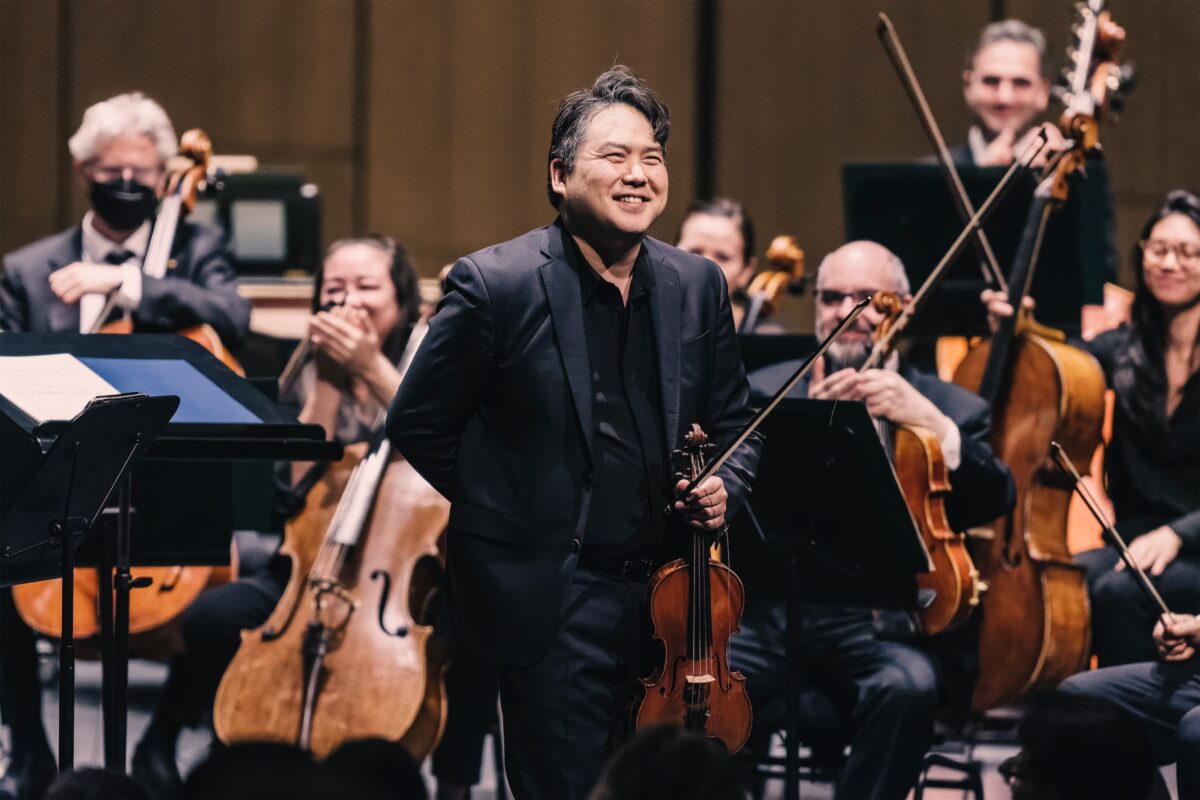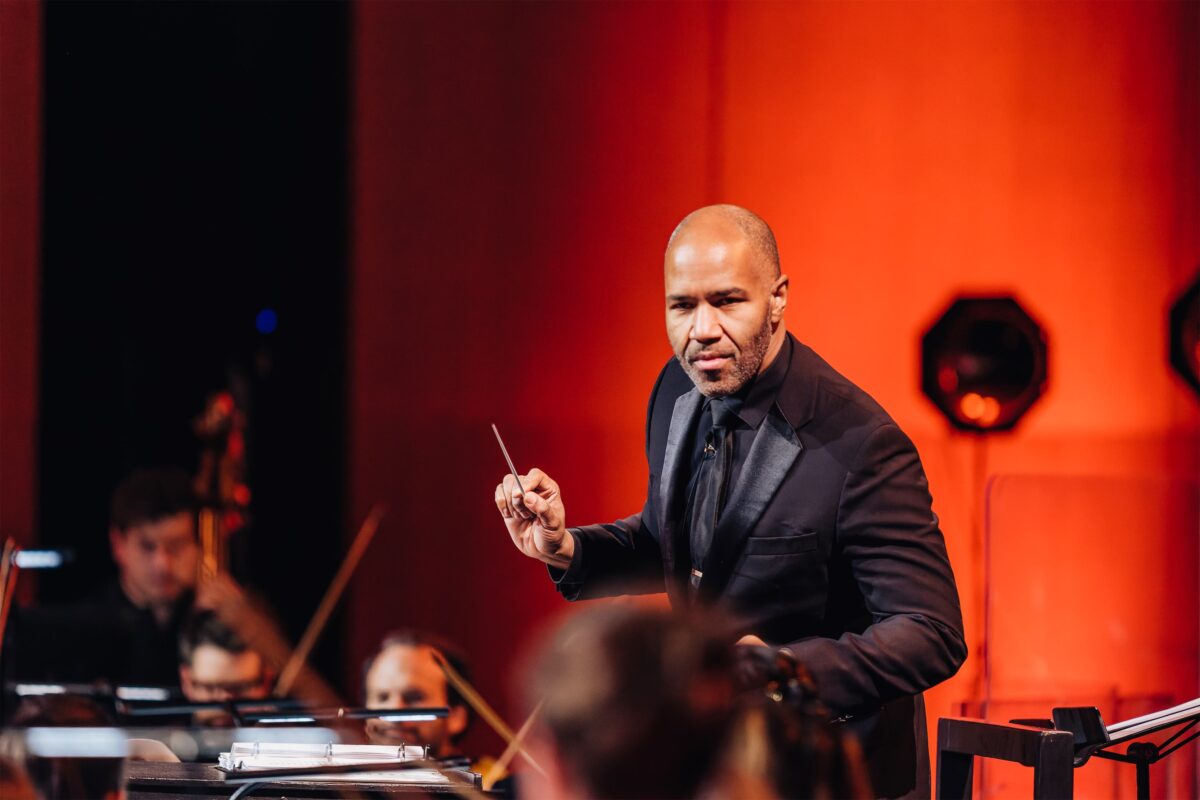In February 2023, Rebecca Diderrich’s dream came true: she landed a tenure-track position playing the viola with the Kitchener-Waterloo Symphony Orchestra after seven years of playing as an extra with the venerable Central Ontario ensemble.
Just eight months later, it all came crashing down. Over email, the KWS abruptly cancelled its season in September, the day before it was set to begin.
“I couldn’t really process it,” Diderrich said. “I walked around the house, rereading it at least 20 times thinking there’s something I’m missing, this is a joke, or somebody has hacked this person’s account. Something can’t be right.”
Days later, the KWS filed for bankruptcy, ending 78 years of orchestral history.
The move left 66 musicians and staff out of a job, including Diderrich.
The collapse of the KWS sent alarm bells ringing across the country about the future of Canadian orchestras.
“It’s one of those things where everybody’s first response was probably, ‘Is it contagious?’ And the second thing was, ‘What were the distant warning signs we need to be thinking about, as well?’” said Katherine Carleton, executive director of Orchestras Canada, which represents more than 70 orchestras across Canada.
What we’re observing (is) significant changes in audience behaviours and expectations post-pandemic. People are still interested, but they are buying later, they are buying less (and) they are buying more spontaneously.
— Katherine Carleton, executive director, Orchestras Canada
Orchestras are still reeling from the impacts of the pandemic. Audiences have been slow to return, with attendance levels down 25 per cent in 2022-23 from the pre-pandemic season of 2018-19, according to Orchestra Canada’s most recent annual report.
The number of performances also fell, decreasing by about 23 per cent to 2,071 performances in 2022-23 compared with 2,704 in 2018-19.
But the impact of the pandemic is just the latest blow to the popularity of orchestras, which has been declining steadily worldwide for decades.
In the U.S., the proportion of the population that turned out to live classical music shows dropped from 11.6 per cent in 2002 to 8.6 per cent in 2017 — three years before the pandemic — according to a 2023 report by the U.S. National Endowment for the Arts.
By 2022, the percentage of Americans attending orchestral performances had fallen to 4.6 per cent — less than half the audience of 2002.
In the U.K., pre-pandemic attendance was fairly stable from 2013-19 — but almost 60 per cent of participants were 65 or older, 84 per cent were white, and more than half were male in the 2018-19 season, according to a 2022 report commissioned for the BBC.
Post-pandemic, audience numbers fell by about 30 per cent — and are not rebounding, according to David Taylor, a well-known British arts consultant and entrepreneur.
“Classical music audiences are vanishing … and they’re not coming back,” Taylor warned in a 2022 blog post. Orchestras urgently need to find ways to draw in younger, more diverse audiences, or they will soon go the way of Blockbuster and Skype, he argued.
“The ‘regular’ concert experience has been largely untouched for over a 100 years and with audiences vanishing, it’s obviously not working,” he wrote, adding that “the need for change (is) screaming at us in the face.”
The lingering impact of the pandemic is exacerbating the problem, observers say. Many people grew comfortable entertaining themselves at home during the pandemic and have been slow to rejoin the live-music community, Carleton explained.
“(People) might see the orchestra as part of a full suite of things they do for entertainment in their lives, but it’s maybe not their only choice,” she said.
Audience behaviour is also changing, with people opting out of the traditional season subscription model that once provided predictable, upfront funding for orchestras, she added.
“What we’re observing (is) significant changes in audience behaviours and expectations post-pandemic,” Carleton said. “People are still interested, but they are buying later, they are buying less (and) they are buying more spontaneously.”

Annabelle Cloutier, the National Arts Centre Orchestra’s executive director of strategy and communication, said she has observed this trend.
NACO subscriptions are on a slight decline, but in the meantime single ticket purchases are increasing, Cloutier said.
Due to the spontaneity of buyers, NACO has opted for audience members to mix and match their season subscription giving people flexibility when buying tickets.
However, the declining popularity of the season subscription model puts additional financial strain on orchestras, Carleton noted.
Ian Yeates, chair of the Regina Symphony Orchestra board of directors, said he has seen the impact of this trend first-hand.
“Now, people are making decisions for a November concert in November. So we don’t get the cash flow and that can (financially) tighten up the situation dramatically,” he said.
Like many orchestras, the RSO has had to make cuts. It had a limited 2021-22 season and had to cancel three shows during the 2022-23 season due to low ticket sales.
“We had a really tough time with the pandemic,” said Yeates. “Last season, we, like a lot of people, assumed that things were going to get more or less back to normal. (But) audiences have been very slow to return.”
We had a really tough time with the pandemic. Last season, we, like a lot of people, assumed that things were going to get more or less back to normal. (But) audiences have been very slow to return.
Ian Yeates, board of directors chair, Regina Symphony Orchestra
The RSO finished the 2022-23 season in a deficit and needed $200,000 in emergency funding from the province to stay afloat.
The pandemic has also had a worrisome impact on the next generation of musicians, experts say.
Christie Gray, CEO of the National Youth Orchestra, said the pandemic years were a great loss for a cohort of young musicians.
The NYO trains and tours during the summer, with around 90 musicians between the ages of 16 and 28.
During the pandemic, the NYO had three years of very limited activity.
“We don’t know now how (the COVID-19 crisis) will impact the industry going forward. But I would think there will be an echo in terms of this next cohort of young musicians that would reach back far into little kids who didn’t start piano lessons or violin lessons and high school kids who never got to do band,” she said.
Gray said she worries about her musicians entering an industry in which jobs are limited and funding is slim.
“The concern for us is, where do our kids go once they’re done with us and ready to get jobs?” she said. “Will there be jobs? Will those jobs pay a living wage?”
Gray said she also has concerns about the popularity of classical music and its longevity in a world where enrollment numbers for classical music programs have been decreasing.
Applications to the NYO have been declining every year since 2017 — well before the pandemic, she said, with universities seeing similar declines in enrollment in music degrees.
“When I speak to colleagues at other higher learning institutions, they’re saying that they’re also seeing a drop in enrollment, especially for classical music,” she said.
As audience and enrollment numbers plummet, many are scrambling to reinvent the orchestra experience, innovating ways to keep audiences engaged and appeal to younger, more diverse listeners.

One way to bring in new audiences is through cheaper prices. On average, a seat in a concert hall can cost anywhere between $40 and $150.
For the NACO, its Under30 program reaches new audiences through affordable $15 tickets. This season, one in five orchestra attendees is an Under30 ticket holder, Cloutier said.
She added it’s not just pop music acts, such as Thorgy Thor and the Thorchestra, that are successful with the Under30 crowd, but also more classical shows like Pouliot & Tchaïkovsky’s Violin Concerto.
To Mathieu Roy, co-founder and artistic director of the Ottawa Pops Orchestra, audience engagement and retention are everything. As a pops orchestra, it plays familiar soundtracks from movies and video games.
Roy said 43 per cent of attendees in the last three Ottawa Pops concerts were first-time visitors.
He strives to make sure new audience members come back by making their experience as accessible and memorable as possible, he added.
For example, Ottawa Pops invites people to record on their phones during a concert, applaud when they feel like it and wear whatever they feel most comfortable in. These guidelines go against traditional audience etiquette expected at an orchestra concert.
We invite people to come as they are. We want to make sure that people feel free to ask their questions. We’re trying to rewrite our own rules of the concert hall.
Mathieu Roy, co-founder and artistic director, Ottawa Pops Orchestra
“We invite people to come as they are. We want to make sure that people feel free to ask their questions,” Roy said. “We’re trying to rewrite our own rules of the concert hall.”
Like Roy, Mark Turner rewrote the rules of his concert hall when COVID-19 hit. Turner is the CEO of the Saskatoon Symphony Orchestra, which has seen massive growth since starting its live-stream programming in 2020.
“I had a Zoom call with my staff on the first of April (2020)… and I said to the staff on that call, ‘I think we innovate or die,’ ” Turner said. “Everybody was on board with, ‘Let’s go, let’s figure out how to do this!’ ”
While 94 per cent of Canadian orchestras tried digital initiatives in 2021, only about 38 per cent still reported online activities in 2022-23, according to Orchestras Canada.
The SSO, however, has stuck with online programming because it helps the orchestra reach new audiences and stay accessible to them, Turner said.
The SSO is now laser-focused on creating diverse music programs that connect audiences to the music and their larger community.
Since pivoting, Turner said the SSO has doubled its budget, added additional programming and increased audience sizes from 55,000 people in 2018 to more than 75,000 this season.
It also added more programming from non-Western musicians, such as Syrian clarinetist Kinan Azmeh, who performed in March, as well as Persian setar player Kiya Tabassian, who played a concert with his ensemble in February.
The SSO also reimagines the orchestra experience by thinking outside the box. To kick off the 2023-24 season, the SSO played Vivaldi’s Four Seasons under the Museum of the Moon, a touring, large-scale digital artwork.
The orchestra hasn’t played any Mozart or Brahms in the past few years, Turner noted.
“I remember sitting at a conference many years ago where someone got up and said, ‘Well, it would be impossible for a modern orchestra to do a season without Mozart, Brahms and Beethoven,’ ” he said.
“It’s actually not impossible at all. Not a single audience member has said to me: ‘Why is there no Mozart? Why is there no Brahms?’ Because (we’ve) given them something relevant, and music that makes them feel something.”
This rethinking of what resonates with audiences is crucial to the future of orchestras, Carleton said.
“There’s a crisis of relevance,” observed Carleton. People are “looking at an established European tradition that has been handed over to us and (asking), ‘What relevance does this have in today’s Canada?’ ”
Roy is also striving to adapt the content of shows so they are relevant to audiences.
This season, the Ottawa Pops’ most successful performance was a video game concert of Heroes of Hyrule. With video game visuals playing on screens, audience members could follow along with both the music and the game. Though untraditional, this concert sold out quickly.
But staying afloat is still a struggle for the orchestra, Roy noted.
“Unfortunately, … 95 per cent of the people running this organization are not getting paid,” said Roy, explaining that the musicians volunteer their time because ticket sales don’t cover enough of the costs.
Despite the challenges, orchestra devotees are not giving up.
Diderrich and other musicians are working to revive the KWS. They have called on their regional council for support and have elected a new KWS board of directors, Diderrich said.
Canadian orchestras have come back from the dead before.
In 2014, after Orchestras London Canada filed for bankruptcy, musicians continued playing under the name #WePlayOn. In 2017, the orchestra was rebranded as London Symphonia and is still going strong, continuing to live stream even in 2024.
It can be a daunting task, but Carleton said Canadian orchestras are up for it.
“As long as there are going to be orchestras, there’s going to be giant things to work on,” she said. “We can call that a crisis or we can just say: ‘This is our work.’ ”





An excellent and poignant piece- glad to see other young people talking about the importance of live cultural events. From the ballet to opera to theatre, the post-pandemic has been slow to return but glad to see organizations are continuing on.